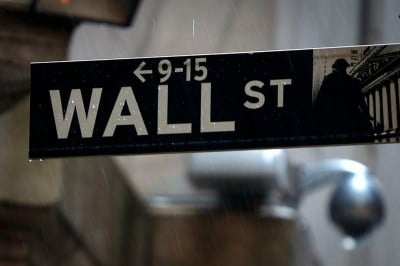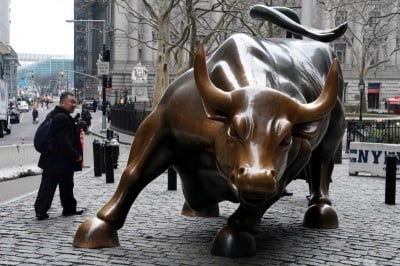 © Reuters. FILE PHOTO: The Charging Bull or Wall Street Bull is pictured in the Manhattan borough of New York City, New York, U.S., January 16, 2019. REUTERS/Carlo Allegri/File Photo/File Photo US500 +0.29% Add to/Remove from Watchlist Add to Watchlist Add Position
© Reuters. FILE PHOTO: The Charging Bull or Wall Street Bull is pictured in the Manhattan borough of New York City, New York, U.S., January 16, 2019. REUTERS/Carlo Allegri/File Photo/File Photo US500 +0.29% Add to/Remove from Watchlist Add to Watchlist Add Position Position added successfully to:
+ Add another position Close CMA +0.52% Add to/Remove from Watchlist Add to Watchlist Add Position
Position added successfully to:
+ Add another position Close DXY -0.23% Add to/Remove from Watchlist Add to Watchlist Add Position
Position added successfully to:
+ Add another position Close
By Saqib Iqbal Ahmed
NEW YORK (Reuters) - A strong U.S. economy and pushback from central bank officials is leading some investors to rethink their bets on how quickly the Federal Reserve will cut rates this year, a shift that is rippling through Treasury and foreign exchange markets even as stocks sit near record highs.
Expectations that the Fed would ease monetary policy in 2024 after its most aggressive tightening cycle in decades fueled an explosive rally in stocks and bonds in the final months of last year, boosting the S&P 500 to an annual gain of more than 24%.
Investors still believe rate cuts are coming, but some have started to question when the Fed will begin lowering borrowing costs and how quickly it will move. While the S&P 500 has notched a fresh record high this month, Treasuries have pared some of their gains and the dollar has perked back up as a result.
Comments following the Fed’s Jan 30-31 policy meeting next week could shed more light on how the central bank views the recent strength in the economy and its timing for rate cuts.
"Markets seemed to be seeing the Fed through rose-colored glasses to end 2023," said Helen Given, FX trader at Monex USA in Washington. "With the new year, price expectations have begun to shift."
A dovish pivot at the Fed's monetary policy meeting in December bolstered investor hopes that the central bank's tightening cycle was over and rate cuts were approaching.
More recently, several officials have pushed back against the perception that monetary policy easing is imminent, saying they need more evidence that inflation will return to the central bank's 2% target and stay at that level before they commit to interest rate cuts. Evidence that areas of the economy remain robust has supported that view.
As a result, investors now expect the Fed to deliver its first interest rate cut in May, instead of March. Fed Funds futures on Tuesday implied a 41% probability for at least one rate cut at the March Fed meeting, down from 88% a month ago.
Among the data showing the economy’s resilience are December’s retail sales and consumer prices, which rose more than expected in December.
Investors are awaiting another key inflation gauge, December's personal consumption expenditures (PCE) reading, on Jan 26.
"Given the strength of both economic growth and wage growth, the Fed still has to worry about the medium-term inflation outlook," wrote Brian Rose, senior economist at UBS Global Wealth Management.
Financial conditions - a measure of the availability of funding in the economy - eased sharply in late 2023 as stocks soared and bond yields plunged.
Some investors have argued that financial conditions could become too loose for the Fed’s comfort if yields keep falling, forcing the central bank to keep rates elevated to prevent inflation from rebounding.
The Goldman Sachs Financial Conditions Index stands at 99.39, not far from the 16-month low of 99.21, touched in late December.
"Current economic conditions are far from those that have historically precipitated rate cuts," said John Lynch, chief investment officer for Comerica (NYSE:CMA) Wealth Management, in a Tuesday report.
The stronger-than-expected economic data have buoyed Treasury yields, which move inversely to bond prices. Yields on the benchmark 10-year U.S. Treasury are up some 35 basis points from their December lows and recently stood at 4.1397. An expected flood of Treasury issuance - seen nearly doubling to $2 trillion this year - has also weighed on government bond prices.
The rise in yields has helped pull the dollar up against a basket of currencies. The dollar index is up 2.3% this year, at a one-month high after touching a five-month low in December.
Stocks, meanwhile, have kept climbing, though their ascent has slowed in January. Following a 4.4% gain in December the S&P 500 is up 1.7% this month, thanks to a rally in big technology and growth stocks fueled in part by excitement over the prospects for artificial intelligence.
However, “with the good news being priced in, and financial conditions now at accommodative levels, it may be difficult to maintain this optimism for long,” Deutsche Bank analysts wrote.
Related pages
ReTo faces Nasdaq delisting over equity shortfall
© Reuters. RETO+2.39%Add to/Remove from WatchlistAdd to Watchlist
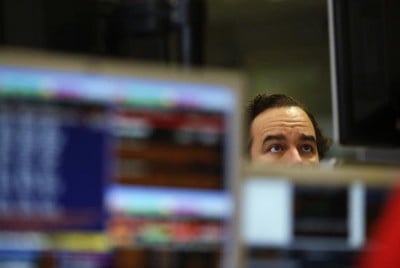
AI to dominate this year's CES, even without OpenAI's Altman on hand
2/2© Reuters. FILE PHOTO: Attendees watch a display on curved OLED screens at the LG Electronics b

France's Le Maire: Rate of agreement at 95% on new EU fiscal deal
© Reuters. FILE PHOTO: French Minister for Economy, Finance, Industry and Digital Security Bruno Le
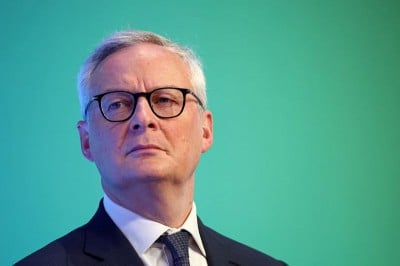
Bank of England to hold its line against rate cut talk
© Reuters. FILE PHOTO: A pedestrian walks past the Bank of England in the City of London, Britain, S
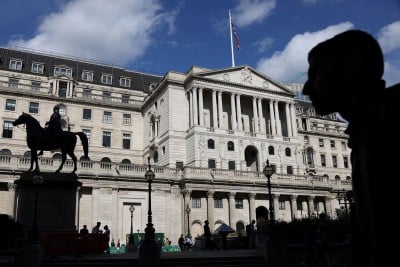
EU considers restarting WTO case against US over steel tariffs - Bloomberg News
© Reuters. FILE PHOTO: A logo is seen at the World Trade Organization (WTO) headquarters before a ne
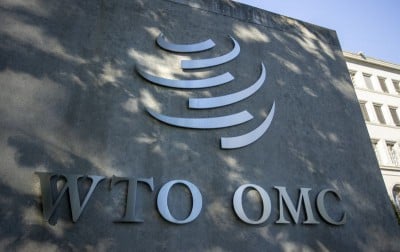
Pro Research: Wall Street dives into Walmart's strategic growth
© Reuters. WMT-0.03%Add to/Remove from WatchlistAdd to Watchlist
